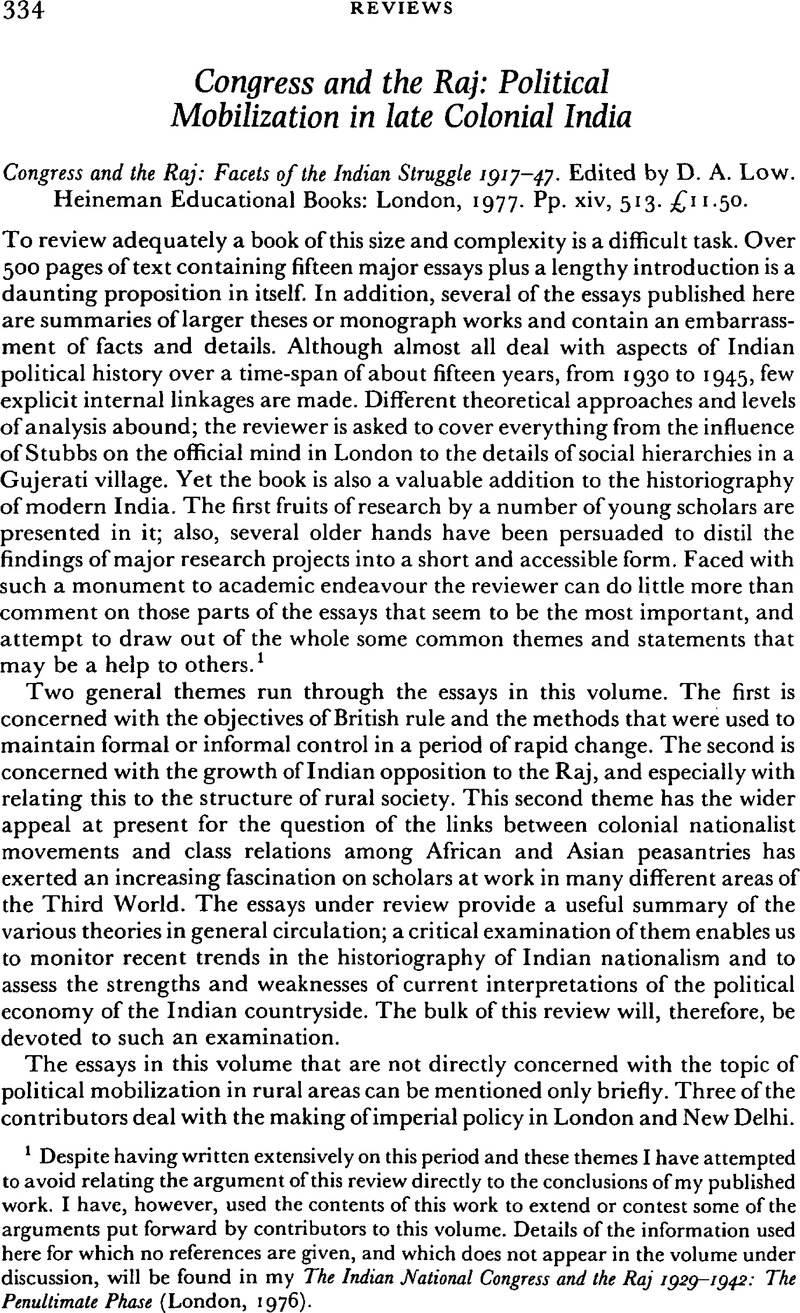Article contents
Congress and the Raj: Facets of the Indian Struggle 1917–47. Edited by D. A. Low. Heineman Educational Books: London, 1977. Pp. xiv, 513. £11.50.
Published online by Cambridge University Press: 28 November 2008
Abstract

- Type
- Congress and the Raj: Political Mobilization in late Colonial India
- Information
- Copyright
- Copyright © Cambridge University Press 1982
References
1 Despite having written extensively on this period and these themes I have attempted to avoid relating the argument of this review directly to the conclusions of my published work. I have, however, used the contents of this work to extend or contest some of the arguments put forward by contributors to this volume. Details of the information used here for which no references are given, and which does not appear in the volume under discussion, will be found in my The Indian National Congress and the Raj 1929–1942: The Penultimate Phase (London, 1976).Google Scholar
2 See Wolf, E. R., Peasant Wars of the Twentieth Century (London, 1971);Google Scholar also Hamzi, Alavi, ‘Peasants and Revolution’ in Gough, K. and Sharma, H. P. (eds), Imperialism and Revolution in South Asia (London, 1973);Google ScholarStokes, E. T., ‘The Return of the Peasant to South Asian History’, in Stokes, E. T., The Peasant and the Raj (Cambridge, 1978);CrossRefGoogle ScholarCharlesworth, N., ‘The “Middle Peasant Thesis” and the Roots of Rural Agitation in India 1914–47’ in Journal of Peasant Studies 7, 3 (1980).Google Scholar
3 Stokes, ‘Return of the Peasant’, p. 284.
4 For some more detail on this process see Tomlinson, B. R., The Political Economy of the Raj 1914–1947: the Economics of Decolonization in India (London, 1979), esp. Ch. 5.CrossRefGoogle Scholar
5 See Statistical Abstract of British India 1921–22 to 1930–31, Tables 61, 67, 69, 85, 86, 132 and 163 and Report of the Indian Taxation Enquiry Committee 1924–25, Volume 1, pp. 340–60. There is a somewhat slanted summary of this Committee's findings in Thomas, P. J., Growth of Federal Finance in India (Madras, 1939), Ch. XXXIII.Google Scholar
6 The seminal work on the ‘national bourgeoisie’ is K. N. Raj, ‘The Politics and Economics of Intermediate Regimes’ in Economic and Political Weekly (1. 12. 73). On the ‘dominant party system’ the key works are Kothari, R., ‘Parliamentary Government: Law and Usage’ in Economic Weekly (20. 5. 61), Centre for the Study of Developing Societies, Occasional Papers, no. 1Google Scholar, Party System and Election Studies (Bombay, 1967),Google Scholar and Weiner, M., Party-Building in a New Nation (Chicago, 1967).Google Scholar
- 1
- Cited by


